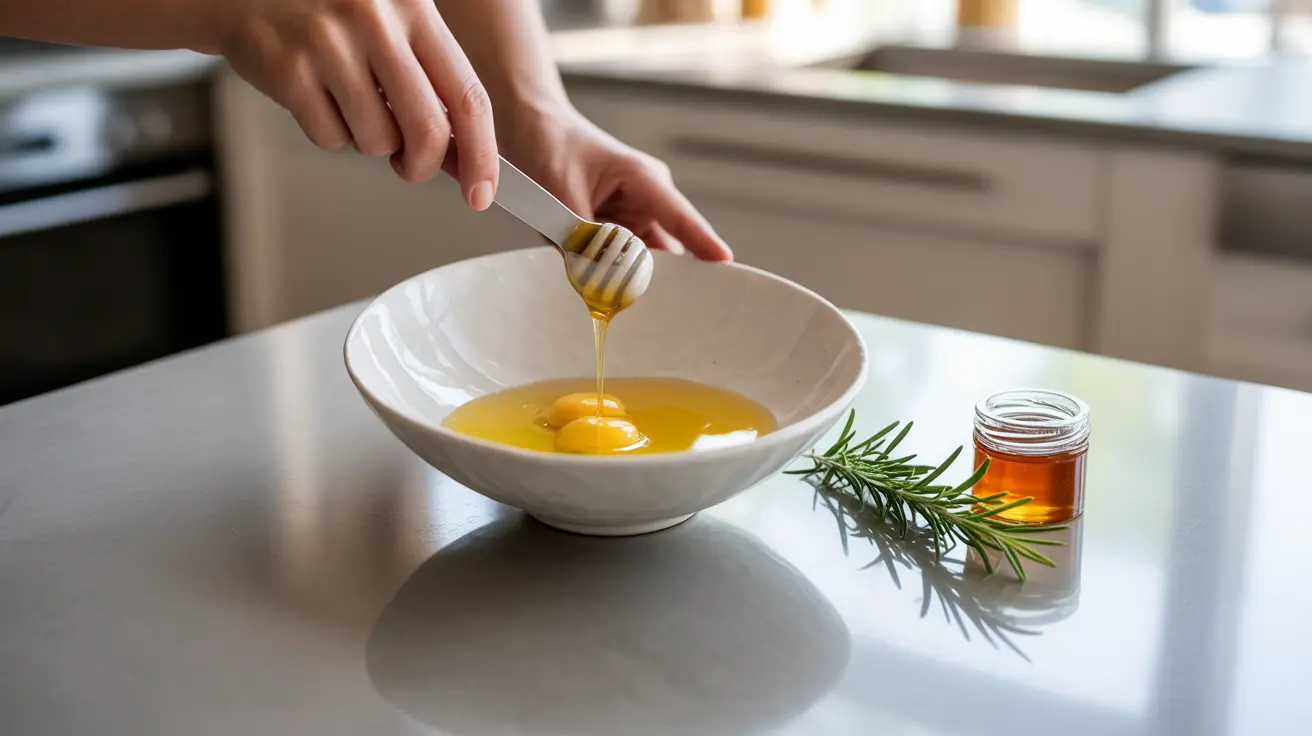Looking for a natural way to revitalize your hair? Egg yolk might be the answer you've been searching for. This nutrient-rich ingredient has been used for centuries in traditional hair care, offering multiple benefits for hair health, strength, and appearance. Understanding how to properly use egg yolk for hair care can help you achieve better results in your natural beauty routine.
In this comprehensive guide, we'll explore the science behind egg yolk's hair-boosting properties, learn how to create effective hair masks, and discover the best practices for incorporating this natural ingredient into your hair care regimen.
The Science Behind Egg Yolk's Hair Benefits
Egg yolks are packed with essential nutrients that can significantly improve hair health. These include:
- Proteins for hair strength and repair
- Biotin for hair growth promotion
- Vitamins A, D, and E for scalp health
- Fatty acids for moisture and shine
- Minerals like zinc and selenium for hair structure
These nutrients work together to nourish both the hair shaft and follicles, potentially leading to stronger, healthier hair growth.
Creating an Effective Egg Yolk Hair Mask
Making an egg yolk hair mask is simple but requires attention to detail for the best results. Here's how to prepare and apply it effectively:
Basic Egg Yolk Hair Mask Recipe
- 2-3 egg yolks (depending on hair length)
- 1 tablespoon olive oil
- 1 tablespoon honey
- Optional: 5-10 drops of essential oil for fragrance
Mix all ingredients thoroughly until well combined. Apply to damp hair, focusing on the scalp and hair lengths. Leave for 20-30 minutes before rinsing with cool water.
Maximizing Hair Health Benefits
To get the most out of egg yolk treatments, consider these important factors:
Application Techniques
Always apply the mask to slightly damp hair, as this helps with even distribution. Massage gently into the scalp to stimulate blood flow and ensure proper nutrient absorption.
Treatment Frequency
For optimal results, use egg yolk treatments 1-2 times per month for normal hair, or up to once weekly for dry or damaged hair. Overuse can lead to protein overload, so monitor your hair's response.
Safety Considerations and Best Practices
While egg yolk is generally safe for hair care, there are some important precautions to keep in mind:
- Always use cool water to rinse
- Perform a patch test before full application
- Avoid use if you have egg allergies
- Don't leave the mask on longer than recommended
- Store unused mixture properly in the refrigerator
Frequently Asked Questions
What are the benefits of using egg yolk for hair growth and preventing hair loss? Egg yolk contains proteins, biotin, and essential nutrients that strengthen hair follicles, potentially reducing hair loss and promoting healthy growth. The vitamins and minerals in egg yolk also support scalp health, creating an optimal environment for hair growth.
How do you make and apply an egg yolk hair mask for dry or brittle hair? Separate egg yolks from whites, mix with olive oil and honey, apply to damp hair, leave for 20-30 minutes, and rinse with cool water. For extra moisturizing benefits, add a tablespoon of avocado or coconut oil to the mixture.
Can eating eggs improve hair health, and what nutrients in egg yolk support this? Yes, consuming eggs can improve hair health from within. Egg yolks contain biotin, proteins, vitamins A, D, E, and minerals that support healthy hair growth and maintenance when included in a balanced diet.
Are there any side effects or risks associated with using egg yolk on hair or scalp? Potential risks include allergic reactions, protein overload with excessive use, and the risk of salmonella if masks aren't properly handled. Always use fresh eggs and avoid use if you have egg allergies or sensitive skin.
How often should egg yolk treatments be used for best hair moisturizing and strengthening results? For best results, use egg yolk treatments once or twice a month for normal hair, or weekly for dry or damaged hair. Monitor your hair's response and adjust frequency accordingly to avoid protein overload.




